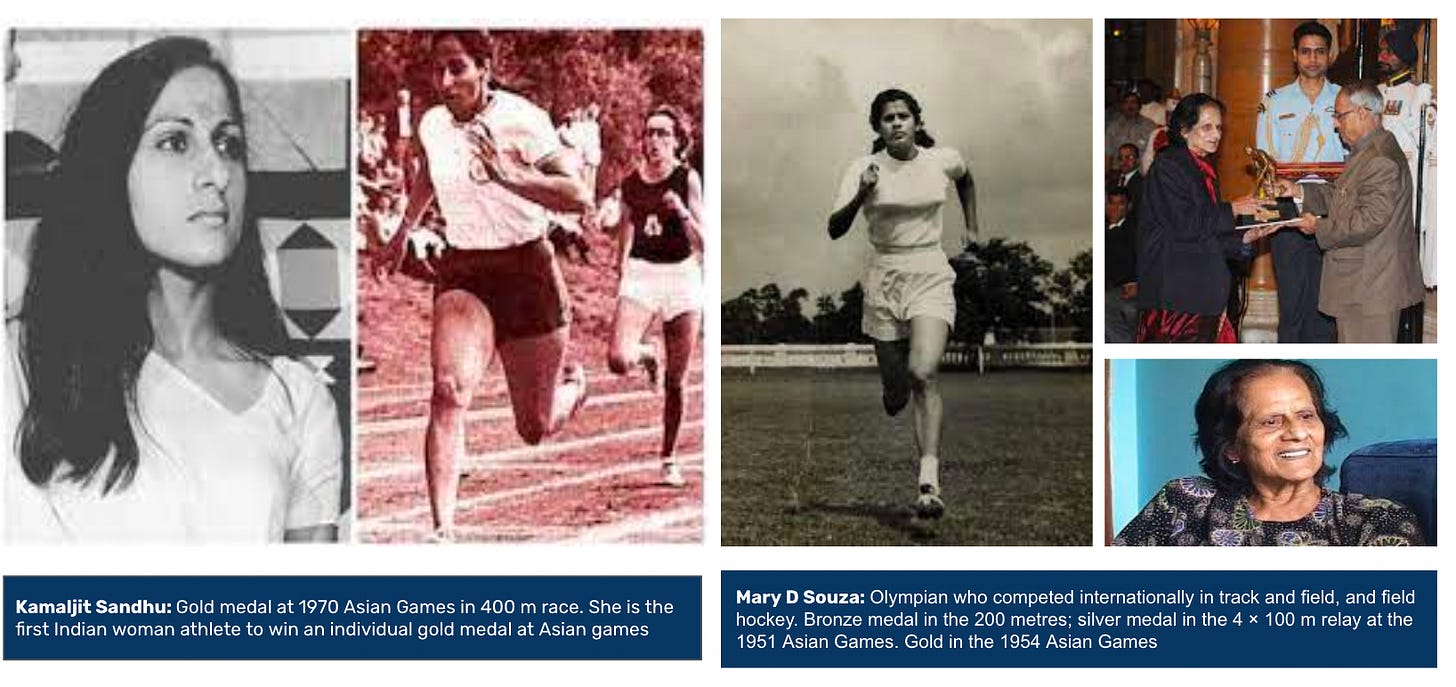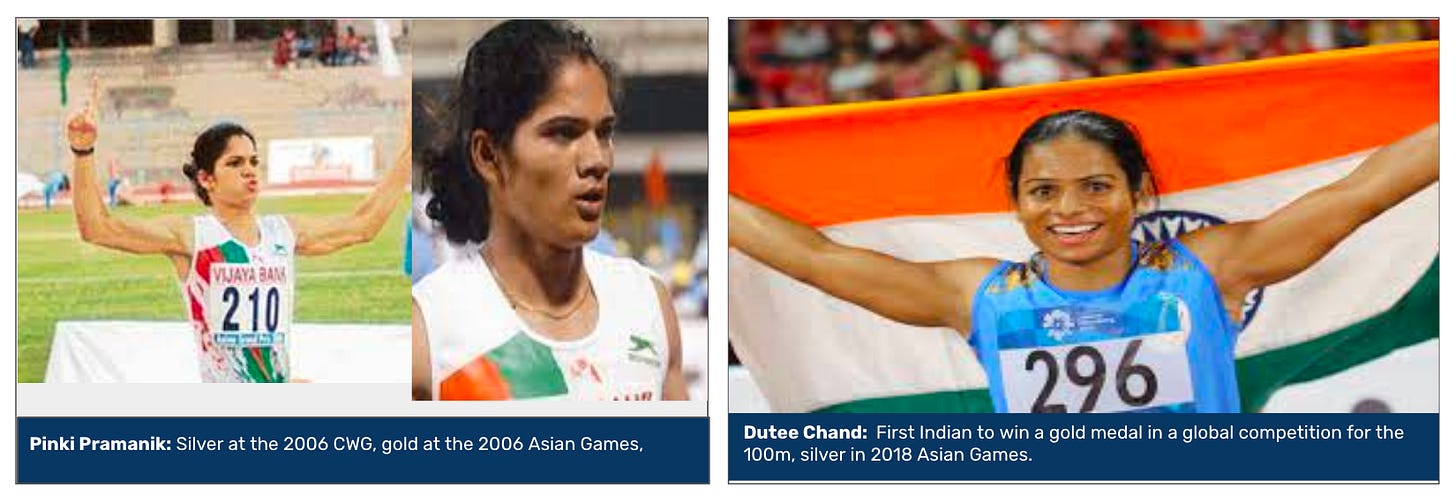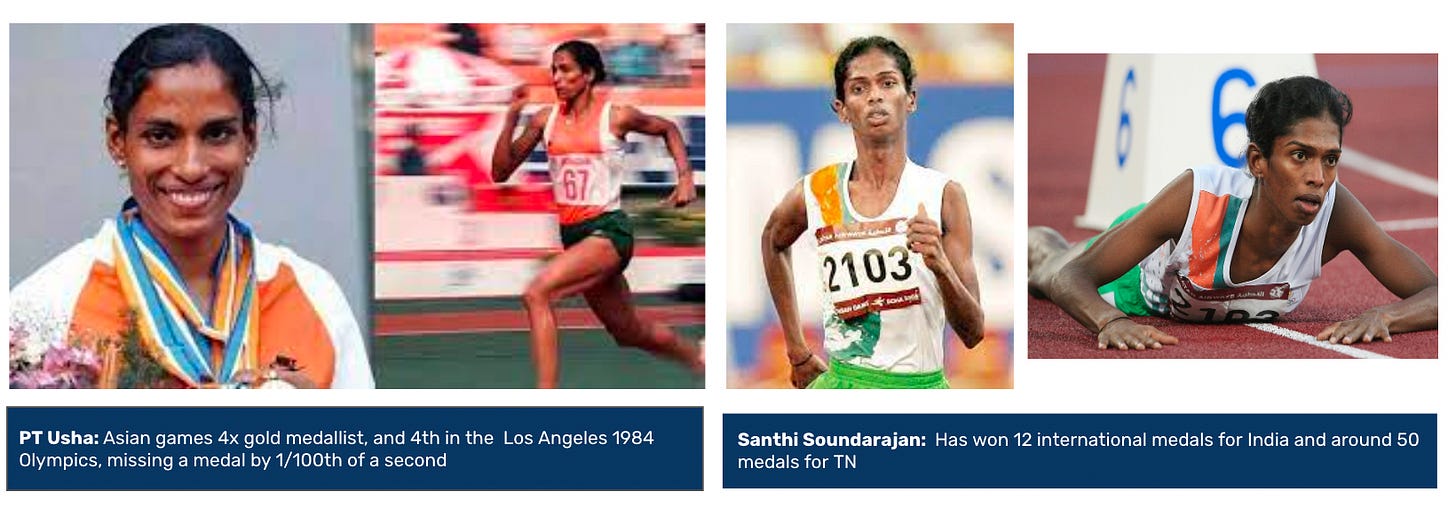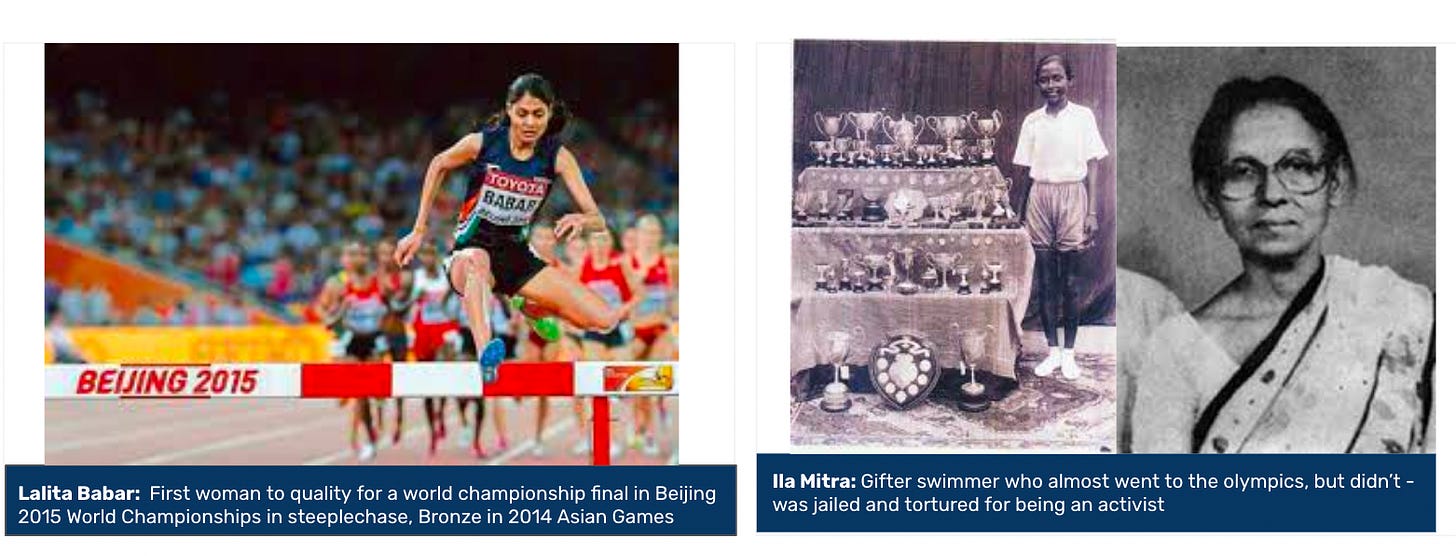[#18] The Day I Became A Runner: Not just a running book, but a story of grit, gender & grace
I’ve been reading the book - “The Day I Became a Runner” by Sohini Chattopadhyay. It’s a great documentation of women athletes in India who have paved the way for the present cohort - me, and us.
I’ve been reading the book - “The Day I Became a Runner” by Sohini Chattopadhyay. I highly recommend reading it, here’s the amazon link for it. It’s a great documentation of women athletes in India who have paved the way for the present cohort - me, and us. There are also themes in the book that have resonated with me personally, and made me realize that while we have come far, there is so much further we have to go. There are a few things that resonated with me personally.
1) The Olympics isn’t just about medals, it’s also about seeing excellence and measuring yourself against it
In the 1980’s, we were in the participation phase for women’s sports - global contests where women were sent as an afterthought, and the expectation was usually for the men’s hockey team to medal, if not win a gold. But this participation phase was important also, as it put in place building blocks for women’s sports to grow. Mary D Souza , an Indian Olympian who competed internationally in track and field and field hocket, and won medals in the 1952 Asian Games, talks about how the exposure she got, even by being sent to the Olympics as an afterthought, was so important, as it made her realize what it actually took to win. She saw the difference in the world champion and in her - the training, equipment, and the focus required to win, and took that back with her when she went back to India, and later took on the role of a PE teacher. There is a line that she’s articulated beautifully - The Olympics is not just about winning - if it was, then only 4 countries would participate. It’s also to see what excellence is, and measure yourself accordingly. And I hope that in the 2024 Olympics (starting July), while we go for medals, we understand that it’s not just about winning, but getting closer to excellence. A lot of times, when we don’t medal in the Olympics, we are very quick to write articles about the “failure” and why the USA / China contingents are winning. I think we have enough exposure to know why. For a lot of these athletes, they are realistic, and they know what is achievable and what isn’t. And a lot of them actually end up having their personal bests at events like this, showing how hard they’re pushing themselves. And that’s the eventual goal isn’t it? To constantly improve and get better?
2) Death By a Thousand Cuts: All of the little things and small indignities add up
How do we get more women into sports? A lot of it is about reducing barriers to sports and fitness. We’re getting there, no doubt. But there is still an undercurrent of hostility, restriction, and lack of safety. The author, Sohini, talks about how running is considered the easiest form of cardiovascular exercise - all that's needed is a pair of shoes, and a road. But this isn’t really the case for women. We still have to worry about the route, making sure it’s not too deserted, it’s not too early, or too late outside, and then after all of that, even while running, still keep an eye out to make sure there is no risky situation you’re getting into. When I was playing professionally, I remember going outside to run on tracks, and the feeling of unsettledness I used to get - of people staring, feeling like I was being watched, and the sense of relief I would get after I would finish the workout and get back home. That exists even now. Public gyms are even worse. And this is something only women notice. Men may not even be aware that these are things that we watch out for.
A lot of times, it’s not even about access. It is about belief. In school, I remember there were girls & boys teams for football. A lot of times the PE teacher (predominantly male), couldn’t be bothered to pay attention to the girls team, or coach them up. What would happen is that they would appoint 2 players from the boys team and say “tum dekh lena.” (you guys please see). This matters. It’s sending a message saying that girls aren’t that important for us to focus our time on. A lot of times it’s not the obvious barrier. It’s these details - the death by a thousand cuts that end up making the decision for a lot of women. And that’s what the book mentions - these women who paved a path for the rest of us had overpowering belief, and a parent / coach / support figure who played a part in building their mental fortitude. We say that what sets sportspersons apart is their towering self belief. A lot of the building blocks of this are laid when they have people who believe in them, even when they don’t believe in themselves.
3) A need for responsible journalism, and advocacy for the athletes by the administration
The stories cultivated by the media play such a huge role in shaping public opinion. There is a need for a better versed media, which does not just write “Why is India not winning Medals” themed articles, but instead presents a view which shows the progress that we have made over the years, in terms of running times, medals won etc. For example: If I start running tomorrow, I don’t expect to win a National title in 2 years. Same logic applies here. And similarly, we need the athletic departments to recognize the time, the effort, and the enablement required to win. The officials can’t be looking just to make a “quick buck” but have to passionately advocate for the athletes, both in India, and in international events. We also need articles written with a pro-athlete sentiment, and not written as clickbait, or to garner eyeballs, but responsible journalism. There’s a story in the book that made me really angry - the case of Santhi Soundarajan. She is a track and field athlete and has won ~12 international medals for India and ~50 medals for her state. This includes a silver at the 2006 Asian Games. After she won the Silver medal, she was called to a room where a “sex test” was administered. The Indian official, after escorting her to the room exited, and left Santhi, who only spoke Tamil, to suffer this indignity, with no idea of what was going on, no support. She failed the sex test, and was sent back to her village in humiliation. And then years later, when a male colleague would accuse her of choosing to be a sports trainer as a way of preying on younger children, the media gleefully printed this out in papers, with no verification of what actually happened, condemning her to a new wave of humiliation. Why did the Indian officials not fight harder to protect Santhi? And more importantly, why did the media not verify what they were printing?
Why is this point important? It’s because this gender test is exclusively for women - and every time a woman comes along who is stronger / faster / does not look like your typical male, this is the easiest accusation to make by other athletic contingents / competitors - she’s actually a male competing. Here’s an example, in the 2023 Asian Games, after Swapna Barman lost the heptathlon bronze to Nandini Agasara, she put out a public tweet accusing Nandini of being transgender. (she later deleted the tweet and apologized for this) This happens everywhere - look at the case of Serena Williams, she’s been accused of being a man simply because she looks stronger than your typical woman. And when accusations can come from anywhere, then this is where responsible journalism plays an even bigger role to control the public narrative, and remembering that it’s not just another story, but a life at stake.
4) Women’s sports are not inferior to men, they’re just very different sports altogether
Women’s sports are considered inferior to men. A common argument against women’s sports that I hear is “Oh if she played against a man, the man would beat her,” and that’s what makes women’s sports inferior. We need to stop looking at it as an inferior form of sport, and look at it as a different sport altogether, with different requirements, and different physicality. That’s something that Serena Williams has also said - if she plays against Andy Murray, she’ll lose 6-0, 6-0 in 10 minutes, and men’s and women’s tennis are almost completely different sports. But if physicality was the only thing that defined a sport as inferior or superior, then half the sports played at the Olympics would be inferior. You can’t compare physicality between men and women. That’s biology. And in sports where being strong and fast, especially over shorter distances matters, men will always have the upper hand. But where does that logic fit in - that I will not watch women’s races or women’s sports, because they are not as fast or strong as men? We watch sports, not just for the physicality, but for the skill, and the heart, and the fighting spirit.
Even in non-running sports (basketball, football, tennis, golf etc) the person/ team who wins isn’t just the fittest or strongest person on the court. It’s about the most skillful player, and the one who has the biggest heart. And that’s why we watch sports, and don’t decide them on paper by matching the team attributes. As women, we’re still catching up in skill, but that’s only because we’ve not had the opportunity to play sports professionally for as much time. And we’re getting there.
We talk about what is needed to get more women in sports. Common answers are infrastructure and awareness. Sure, infrastructure is needed. But that’s not just for women. That is generally to get more people into sports. What we need, REALLY need, is advocacy and people to believe in us.
There’s a quote by Dr. Robert Halgren, which sums it up:
“Coach me and I will learn; challenge me and I will grow; believe in me and I will win.” Apt.
And for those of you who’re interested in knowing more, read “The Day I Became a Runner.” You won’t regret it.
Edit: I used to play professional tennis, and thats why this book resonated with me personally. To read more about my journey, you can check the below link out:






![[#32] You're not a former anything, but a future something](https://substackcdn.com/image/fetch/$s_!9hFG!,w_140,h_140,c_fill,f_auto,q_auto:good,fl_progressive:steep,g_auto/https%3A%2F%2Fsubstack-post-media.s3.amazonaws.com%2Fpublic%2Fimages%2Fb4b5afa0-3913-48d5-9578-265469471970_1104x648.png)